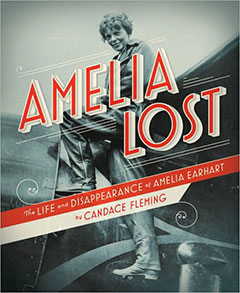 During my sophomore year in high school, on our way back from the homecoming dance, my boyfriend of three whole weeks—Doug Cougill—broke up with me; dumped me for another girl he’d actually spent most of the evening dancing with.
During my sophomore year in high school, on our way back from the homecoming dance, my boyfriend of three whole weeks—Doug Cougill—broke up with me; dumped me for another girl he’d actually spent most of the evening dancing with.
I was devastated.
Still wearing my farm-chic Gunny Sack dress that I’d bought off the rack at Nordstrom’s (this was 1978 after all) I flung myself onto the sofa and sobbed out my anguish. Then I waited for my mother to share a similar story from her past, one that would reflect my own emotions, one that would be comforting in its fulfillment of that old adage, “misery loves company.”
Instead, my mother told me this unexpected story:
It was July 2, 1937, and my mother—fourteen at the time—was listening to Fibber McGee and Molly on the radio when an announcer broke in with stunning news. World famous aviator, Amelia Earhart was missing—enroute to Howland Island from New Guinea she had simply vanished. Authorities believed she’d gone down at sea.
My mother couldn’t believe it. It seemed impossible. Amelia Earhart was the woman who could do anything—a larger-than-life role model who symbolized endless female possibilities. She couldn’t be lost at sea. She just couldn’t!
Devastated, my mother, who lived in a little town on the shore of Lake Michigan at the time, stumbled down to the beach. There she stood in the sand, gazing up into the cloudless blue sky. Watching. Waiting. Willing Amelia home. She was convinced that if she stood there long enough, she would eventually spy the aviatrix winging her way to safety. She just knew she would.
But of course Amelia didn’t come.
And she didn’t come.
She never came.
And even though almost forty years had passed between the day Amelia had gone missing, and the day Doug Cougill had tossed me over for another girl, I could still hear the sadness and the longing in my mother’s voice.
This is why I wrote Amelia Lost — a book a long time in the coming. Amelia Earhart had broken my mother’s heart. And in turn, she had broken mine. And broken hearts make for good books. (You’ll notice I have not written a book about Doug Cougill).
But this is also how I wrote Amelia Lost.
Confused?
Let me explain.
By telling me that particular story, my mother had given me what I have come to call an “equivalent moment.” She hadn’t simply told me a break-up story from her teen years. Instead, she told me an equivalent story of loss from her teen years. Through this story, I could share her emotion and connect it to my own.
And yet, the story she gave me did so much more. It expanded my understanding, and invited me to step beyond my self-absorbed teen self to the world beyond. It wasn’t just a mirror reflecting back my emotions, but a window inviting me to step beyond them.
This was obviously my mother’s goal.
And it has become mine as a writer. Whether the project is a picture book, or a middle grade novel, or a biography, my purpose is to present equivalent moments to my readers. To give them a story that doesn’t just show them the world, but shows them what their world can be.


2 Responses
I read and reread this post absorbing every word … and I’m on my way to becoming a better writer. Thank you.
As one of your avid readers, I always can feel the emotion and those equivalent moments when I read your books. I’m currently reading ON THE DAY THAT I DIED and I honestly feel so connected to every one of their stories. AMELIA LOST was also one of my favorites and it inspired such drive and passion for me as a woman, that I encourage many young readers (especially young girls) to read it as well. Thank you!